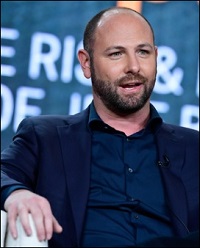By Pam Martens and Russ Martens: July 11, 2021 ~
Fed Chair Jerome Powell will take his seat before the House Financial Services Committee on Wednesday at noon and before the U.S. Senate Banking Committee on Thursday at 9:30 a.m. for his semi-annual testimony on monetary policy. Some embarrassing questions may come up for Powell based on an investigative report on the Fed that’s airing earlier in the week.
This Tuesday evening, the PBS investigative program, Frontline, will broadcast a documentary covering its year-long investigation of the Federal Reserve’s bailouts of Wall Street, from the financial crisis of 2008 to the present.
According to the information about the program that Frontline has released, the documentary, titled “The Power of the Fed,” will include interviews with multiple people who believe that the Fed has been captured by Wall Street and is creating dangerous asset bubbles.
Legendary investor Jeremy Grantham will tell viewers this about the Fed’s policies:
“They have the housing market, the stock market and the bond market all overpriced at the same time. And they will not be able to prevent, sooner or later, the asset prices coming back down. So we are playing with fire because we have the three great asset classes moving into bubble territory simultaneously.”
Grantham characterizes what the Fed has created on Wall Street as a “giant bloodsucker,” that is “sucking more than twice the blood out of the rest of the economy.”
Andrew Huszar, a former insider at the Federal Reserve Bank of New York, where the Federal Reserve has a serial habit of outsourcing its bailout programs for the mega banks on Wall Street (likely because it is literally owned by those same banks) will explain to viewers how he was “single-handedly responsible for directing the deployment of $1.25 trillion of Fed funds, and we did not see the knock-on benefits that we had hoped for the average American.”
Huszar is talking about the $1.25 trillion the Fed spent in buying up agency Mortgage-Backed Securities (MBS) following the 2008 financial crash on Wall Street. Despite the fact that the Fed saw no benefits accrue from that program to the average American, it doubled down on the same program during the pandemic, buying up $40 billion a month in agency MBS. The Fed’s current total of agency MBS on its balance sheet stands at $2.3 trillion as of last Wednesday. The custodian of the securities purchased in the Fed’s MBS program has been, from the outset, JPMorgan Chase, one of the largest owners of the New York Fed. The fact that the bank has received an unprecedented five felony counts from the Department of Justice since 2014 hasn’t changed the Fed’s mind about entrusting the bank with $2.3 trillion of its assets. (JPMorgan Chase admitted to all five felony counts.)
Huszar is the same man who, in 2013, wrote an OpEd for the Wall Street Journal titled “Confessions of a Quantitative Easer,” discussing the Fed’s unprecedented bond-buying after the crash of 2008. Huszar summed up the experience as follows:
“In its almost 100-year history, the Fed had never bought one mortgage bond. Now my program was buying so many each day through active, unscripted trading that we constantly risked driving bond prices too high and crashing global confidence in key financial markets. We were working feverishly to preserve the impression that the Fed knew what it was doing.
“It wasn’t long before my old doubts resurfaced. Despite the Fed’s rhetoric, my program wasn’t helping to make credit any more accessible for the average American. The banks were only issuing fewer and fewer loans. More insidiously, whatever credit they were extending wasn’t getting much cheaper. QE may have been driving down the wholesale cost for banks to make loans, but Wall Street was pocketing most of the extra cash.”
The illusion that when the Fed pumps money into the banks it will somehow trickle down to the average American is back in full swing this time around. Powell states at every press conference that the Fed is working to benefit the American people. The reality is that the banks that received the almost zero interest rate loans from the Fed since September 17, 2019 (before there was any pandemic anywhere in the world) have continued to gouge consumers on credit cards. (See Citigroup Has Made a Sap of the Fed: It’s Borrowing at 0.35 % from the Fed While Charging Struggling Consumers 27.4 % on Credit Cards.)
Defending the Fed in the Frontline documentary is Neel Kashkari, President of the Federal Reserve Bank of Minneapolis. Kashkari will tell viewers this:
“The Fed has been on a mission, I’ve been on a mission to put Americans back to work and help them get their wages up, especially for those lowest income Americans. And if it’s had some effect on Wall Street, to me, the tradeoff is well worth it if we can put Americans back to work, so that they can put food on the table, they can take care of themselves. That is profoundly beneficial to society.”
The Committee Memorandum released by the House Financial Services Committee for this Wednesday’s hearing with Fed Chair Powell tells us this about the state of employment in the U.S.:
“…the employment shortfall from January 2020 remains significant, with nearly 7 million fewer jobs than in February 2020, and continued stress in several hard-hit sectors, such as leisure and hospitality, construction, manufacturing, and government. As Chair Powell acknowledged in his June press conference, ‘joblessness continues to fall disproportionately on lower-wage workers in the service sector and on African Americans and Hispanics.’ The latest jobs figures show that the Black unemployment rate stands at 9.7%, compared with 5.4% for White workers.”
Kashkari was not always so sanguine about the Fed’s relationship with the Wall Street banks. In October of 2016 Kashkari gave an interview to Yahoo! Finance. In that interview he addressed complaints from New York bankers that the New York Fed was tardy in riding to the rescue of the repo loan market when it spiked from about 2 percent interest rates on overnight loans to 10 percent on September 17, 2019. (Repo stands for “repurchase agreements” which are collateralized overnight loans that financial firms make between each other.)
Kashkari said this at the time:
“At the end of the day it’s banks jobs to make sure they’re funding themselves appropriately to meet their needs. So then when banks found that they were short of liquidity they said ‘oh my gosh, where’s the Fed to run and comfort us.’
“There’s something called the discount window that the Fed provides backstop funding to banks. It’s there. It’s available to be used. Banks don’t like to use it because they fear it might make them look a little bit weak.
“So I’m not very sympathetic with a bunch of banks saying ‘well you provided me with a backstop source of liquidity but I didn’t want to use that one. I need you to provide me another backstop source of liquidity whenever I make a mistake. I’m not sympathetic with that argument.”
From September 2019 to March of 2020, the Fed pumped out more than $9 trillion cumulatively in below-market rate loans to the trading units of the mega Wall Street banks in these repo loans. To this day, the Fed has refused to release the names of the banks that received these funds or the amounts each bank received. It has released only the cumulative tallies of the loan amounts.
The Fed pulled this same maneuver after the 2008 crash. It battled with media outlets for years, refusing to release the names of the recipients and amounts received. Only after the Fed lost the court battle and Senator Bernie Sanders attached an amendment to the Dodd-Frank financial reform legislation ordering a government audit of the Fed’s bailout programs did the public finally learn the truth. The government audit showed that the Fed had funneled $16.1 trillion in cumulative loans to Wall Street banks and their foreign counterparties without the awareness of Congress. But that audit covered only some of the Fed’s bailout programs. A more comprehensive analysis of the Fed’s bailouts by the Levy Economics Institute showed that the full tab was $29 trillion in cumulative loans.
The writers and producers of the documentary are Anya Bourg and James Jacoby. The co-producer is Megan Robertson. The senior producer is Frank Koughan.
The program will air this Tuesday, July 13, at 10 p.m. EDT and 9:00 p.m. CDT on PBS. It will stream on July 13 at 7 p.m. EDT and 6 p.m. CDT at pbs.org/frontline.



